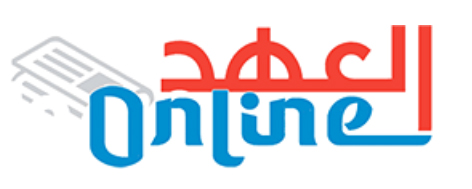د. محمد يوسف قباني يكتب:ضوابط الحوكمة: نموذج لتحقيق الجودة المؤسسية (14) Governance Controls: A Model for Achieving Institutional Quality (14) Dr. Mohamed Elgabbani..

د. محمد يوسف قباني يكتب:ضوابط الحوكمة: نموذج لتحقيق الجودة المؤسسية (14)
Governance Controls: A Model for Achieving Institutional Quality (14)
Dr. Mohamed Elgabbani..
الحوكمة المؤسسية هي الإطار الذي يُحدّد من خلاله كيفية توجيه وإدارة المؤسسات لتحقيق أهدافها بكفاءة وفعالية. يعتبر هذا المفهوم أحد الأعمدة الأساسية لتحقيق الجودة المؤسسية في المؤسسات الحديثة، حيث تساهم الحوكمة في تعزيز الشفافية، المحاسبة،
الاستدامة، واتخاذ القرارات المبنية على أسس سليمة. وفي هذا الطرح العلمي، سنتناول ضوابط الحوكمة باعتبارها نموذجًا يُمكّن المؤسسات من تحقيق الجودة المؤسسية، مستعرضين الإطارين النظري والعملي مع التركيز على الأسباب، العلاقات المنطقية، وأمثلة حقيقية تدعم التطبيق العملي.
ضوابط الحوكمة المؤسسية
الإطار النظري
تعريف الحوكمة:
تُعرّف الحوكمة المؤسسية بأنها نظام الإدارة والرقابة الذي يُحدّد الأدوار والمسؤوليات بين الأطراف المعنية (مجلس الإدارة، الإدارة التنفيذية، أصحاب المصلحة).
أهداف الحوكمة:
1. تحقيق الشفافية والمحاسبة.
2. تعزيز الثقة بين المؤسسة وأصحاب المصلحة.
3. ضمان استدامة الأداء المؤسسي.
مبادئ الحوكمة:
1. المشاركة: إشراك جميع أصحاب المصلحة في اتخاذ القرارات.
2. المساءلة: توضيح المسؤوليات والمحاسبة على الأداء.
3. الشفافية: نشر المعلومات بشفافية لتحفيز الثقة.
4. الإنصاف: معاملة جميع الأطراف بإنصاف وعدالة.
الإطار العملي
ضوابط الحوكمة المؤسسية
الإطار التنظيمي:
1. وجود هيكل تنظيمي واضح يحدد المهام والصلاحيات.
2. تشكيل لجان مثل لجنة التدقيق ولجنة الحوكمة.
التشريعات والسياسات:
1. صياغة لوائح داخلية تتماشى مع القوانين المنظمة.
2. تطبيق معايير دولية مثل معايير ISO.
أنظمة الرقابة والمراجعة:
1. إنشاء أنظمة رقابة داخلية فعالة.
2. الاعتماد على مراجعين خارجيين لضمان الموضوعية.
الإفصاح والشفافية:
1. نشر التقارير السنوية والبيانات المالية بوضوح.
2. استخدام قنوات تواصل فعالة مع أصحاب المصلحة.
إدارة المخاطر:
1. وضع استراتيجيات للتعامل مع المخاطر المحتملة.
2. إجراء تحليل دوري للمخاطر.
الدوافع والأسباب لتطبيق الحوكمة
1. الاستجابة للتحديات: الحوكمة تعالج مشاكل الفساد وسوء الإدارة.
2. تعزيز التنافسية: تساهم في تحسين سمعة المؤسسة وقدرتها على المنافسة.
3. الامتثال للقوانين: تحقيق التوافق مع المتطلبات القانونية والدولية.
4. حماية حقوق أصحاب المصلحة: ضمان حقوق المساهمين والعملاء والموظفين.
العلاقات المنطقية بين ضوابط الحوكمة والجودة المؤسسية
1. الشفافية والجودة: الشفافية تُعزّز الثقة وتحفّز التزام العاملين بتحسين الأداء.
2. المساءلة والإنتاجية: المساءلة تزيد من كفاءة العمليات التشغيلية.
3. إدارة المخاطر والاستدامة: التخطيط السليم للمخاطر يضمن استدامة المؤسسة.
أمثلة حقيقية
1. شركة أرامكو السعودية:
تعتمد على معايير صارمة للحوكمة من خلال الإفصاح الدقيق عن بياناتها المالية وتقاريرها السنوية.
2. شركة آبل:
تعكس الحوكمة الفعالة في قدرتها على إدارة الابتكار ومخاطر السوق.
3. البنك الدولي:
يطبّق أنظمة حوكمة شاملة لتحقيق الشفافية في توزيع القروض والمساعدات.
أنشطة للتطبيق وتوسيع الفهم
1. تحليل حالة دراسية:
قم بدراسة تطبيق الحوكمة في مؤسسة ناجحة مثل “أرامكو” أو “آبل”، وحدد العناصر الرئيسية التي ساعدت على نجاحها.
2. ورشة عمل تطبيقية:
تقسيم المشاركين إلى فرق لتصميم هيكل حوكمة لمؤسسة خيالية، مع تحديد الأدوار والصلاحيات.
3. محاكاة إدارة المخاطر:
قم بإجراء سيناريو افتراضي لتحديد المخاطر ووضع خطط للتعامل معها.
الحوكمة المؤسسية ليست مجرد إطار تنظيمي بل هي نهج استراتيجي لتحقيق الجودة المؤسسية. من خلال تطبيق ضوابط الحوكمة بفعالية، يمكن للمؤسسات تعزيز قدرتها على مواجهة التحديات، تحسين أدائها، وضمان استدامتها على المدى الطويل. يمثل هذا الطرح دعوة لتبني الحوكمة كأداة لتحويل المؤسسات إلى نماذج للشفافية، المسؤولية، والكفاءة في عالم مليء بالتحديات.
Corporate governance is the framework that defines how institutions are directed and managed to achieve their goals efficiently and effectively. This concept is considered one of the main pillars of achieving institutional quality in modern institutions,
as governance contributes to enhancing transparency, accountability, sustainability, and making sound decisions. In this scientific presentation, we will discuss governance controls as a model that
enables institutions to achieve institutional quality, reviewing the theoretical and practical frameworks with a focus on the reasons, logical relationships, and real examples that support practical application.
Corporate governance controls
Theoretical framework
Definition of governance:
Corporate governance is defined as the management and control system that defines the roles and responsibilities between the concerned parties (the board of directors, executive management, stakeholders).
Governance objectives:
1. Achieving transparency and accountability.
2. Enhancing trust between the institution and stakeholders.
3. Ensuring the sustainability of institutional performance.
Governance principles:
1. Participation: Involving all stakeholders in decision-making.
2. Accountability: Clarifying responsibilities and accountability for performance.
3. Transparency: Disseminate information transparently to stimulate trust.
4. Fairness: Treat all parties fairly and justly.
Practical Framework
Corporate Governance Controls
Organizational Framework:
1. Having a clear organizational structure that defines tasks and powers.
2. Forming committees such as the Audit Committee and the Governance Committee.
Legislation and Policies:
1. Drafting internal regulations that are in line with the governing laws.
2. Applying international standards such as ISO standards.
Control and Audit Systems:
1. Establishing effective internal control systems.
2. Relying on external auditors to ensure objectivity.
Disclosure and Transparency:
1. Publishing annual reports and financial statements clearly.
2. Using effective communication channels with stakeholders.
Risk Management:
1. Developing strategies to deal with potential risks.
2. Conducting periodic risk analysis.
Motivations and Reasons for Implementing Governance
1. Responding to Challenges: Governance addresses problems of corruption and mismanagement.
2. Enhancing Competitiveness: It contributes to improving the organization’s reputation and ability to compete.
3. Compliance with laws: Achieving compliance with legal and international requirements.
4. Protecting stakeholder rights: Ensuring the rights of shareholders, customers and employees.
Logical relationships between governance controls and institutional quality
1. Transparency and quality: Transparency enhances trust and motivates employees’ commitment to improving performance.
2. Accountability and productivity:
Accountability increases the efficiency of operational processes.
3. Risk management and sustainability: Proper risk planning ensures the sustainability of the organization.
Real examples
1. Saudi Aramco:
Relies on strict governance standards through accurate disclosure of its financial statements and annual reports.
2. Apple:
Effective governance is reflected in its ability to manage innovation and market risks.
3. The World Bank:
Applies comprehensive governance systems to achieve transparency in the distribution of loans and aid.
Activities for application and expanding understanding
1. Case study analysis:
Study the application of governance in a successful organization such as “Aramco” or “Apple”, and identify the key elements that contributed to its success.
2. Practical Workshop:
Divide participants into teams to design a governance structure for a fictional organization, defining roles and authorities.
3. Risk Management Simulation:
Conduct a hypothetical scenario to identify risks and develop plans to address them.
Corporate governance is not just a
regulatory framework, but a strategic approach to achieving institutional quality. By effectively implementing governance controls, organizations can enhance their ability to meet challenges, improve their
performance, and ensure their long-term sustainability. This presentation represents a call to adopt governance as a tool to transform organizations into models of transparency, accountability, and efficiency in a world full of challenges.









